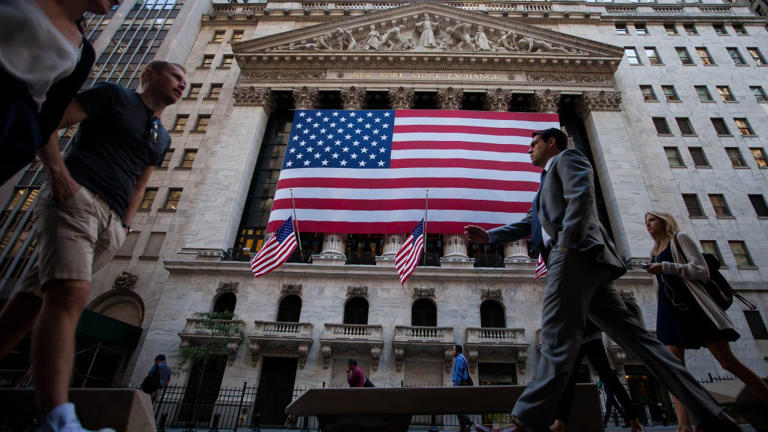The prevailing concern among bond investors centers on the relentless ascent of federal budget deficits, a trend expected to persist regardless of the outcome of the upcoming presidential election. Despite assurances from both President Joe Biden and former President Donald Trump about their administrations’ efforts towards deficit reduction, forecasts from the nonpartisan Congressional Budget Office (CBO) paint a bleak picture. Projections indicate a trajectory of deficits rising from approximately $1.6 trillion in 2024 to a staggering $2.6 trillion a decade hence.
This ominous outlook has sent shockwaves through the bond market, prompting analysts and investors alike to brace for a future characterized by persistently elevated deficits. The implications for the Treasury market are profound, with concerns mounting over the potential surge in bond yields and the consequential need for increased debt issuance to finance deficit spending. These apprehensions have left many market participants on edge, scrambling to formulate strategies to safeguard their portfolios against potential disruptions in the $27 trillion Treasury market.
Despite these concerns, a full-blown debt crisis appears to be a distant specter for the time being. JPMorgan analysts characterize the current situation as a “silent crisis,” suggesting that while the U.S. national debt poses a significant long-term challenge, immediate repercussions are not imminent.
Nevertheless, the evolving dynamics of the bond market have not escaped the attention of investors. The dollar’s status as the world’s leading reserve currency and the sheer size and depth of the Treasury market provide some degree of insulation against a sudden collapse in demand for U.S. government bonds. However, shifts in foreign ownership and the Federal Reserve’s ongoing reduction of its bond holdings have introduced new variables into the equation, prompting investors to reassess their positions.
Amidst lingering uncertainty surrounding the Federal Reserve’s interest rate policies and the potential for further deficit escalation, investors are reevaluating their exposure to government bonds. Some, like David Rogal of BlackRock, anticipate a rise in term premiums as supply outstrips demand, leading to higher yields on longer-term bonds. Others, such as Craig Ellinger of UBS Asset Management, advocate for shorter-term debt as a safer alternative in the event of deficit escalation.
Ella Hoxha of Newton Investment Management echoes these sentiments, favoring short-term maturities given concerns about unsustainable debt levels and the potential for higher interest rates in the future. With yields for the benchmark 10-year Treasury bond hovering around 4.4%, Hoxha warns that rates could climb to 8% or even 10% in the coming years, underscoring the urgency of addressing the nation’s ballooning debt.
Indeed, the federal government’s gross national debt currently exceeds $34.5 trillion, with projections indicating a staggering rise to $48 trillion by 2034. This mounting debt burden has already resulted in interest payments on the debt surpassing expenditures on defense and Medicare, further exacerbating the deficit dilemma.
As the nation grapples with these fiscal challenges, bond investors find themselves navigating uncertain terrain, bracing for potential upheavals in the bond market while seeking to mitigate risks and capitalize on opportunities in an increasingly complex economic landscape.
